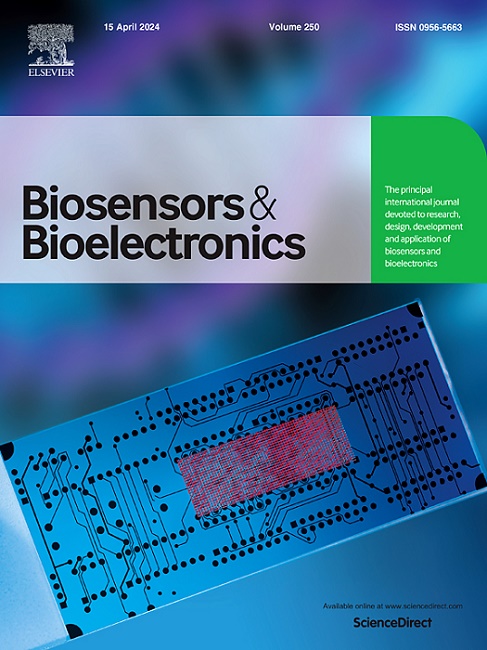电化学传感器:类型,应用,以及微流体集成中振动和流体流动的新影响。
IF 10.5
1区 生物学
Q1 BIOPHYSICS
引用次数: 0
摘要
电化学传感器是受高需求和持续技术进步影响的多样化和不断发展的化学传感器世界的一部分。电化学传感器具有成本效益,响应时间短,易于使用,良好的检测限(LOD)和灵敏度,易于小型化等优点,同时提供一致的分析结果。这些传感器用于各种领域,如医疗保健和诊断、环境监测和食品工业,以检测细菌、病毒、重金属、杀虫剂等。在这篇综述中,我们提供了电化学传感技术的全面概述,重点是通过微流体系统中振动和流体动力流动的集成来提高传感器的性能。我们对这些方法进行了结构化的比较,利用表格来突出显示对性能增强最有效的方法。此外,我们对各种电化学传感应用进行了分类,为这两种技术在降低LOD方面的实际应用提供了见解。最后,我们对相关研究进行了比较分析,重点介绍了流体动力流动和振动对传感机制的影响。我们还探索了这些技术的潜力,以促进自动化,高通量微流控平台的发展,从而优化其功能和效率。本文章由计算机程序翻译,如有差异,请以英文原文为准。

Electrochemical sensors: Types, applications, and the novel impacts of vibration and fluid flow for microfluidic integration
Electrochemical sensors are part of a diverse and evolving world of chemical sensors that are impacted by high demand and ongoing technological advancements. Electrochemical sensors offer benefits like cost-efficiency, short response time, ease of use, good limit of detection (LOD) and sensitivity, and ease of miniaturization while providing consistent analytical results. These sensors are employed in various fields—such as healthcare and diagnostics, environmental monitoring, and the food industry—to detect bacteria, viruses, heavy metals, pesticides, and more. In this review, we provide a comprehensive overview of electrochemical sensing techniques, with a focus on enhancing sensor performance through the integration of vibration and hydrodynamic flow in microfluidic systems. We present a structured comparison of these methods, utilizing tables to highlight the approaches most effective for performance enhancement. Additionally, we classify various electrochemical sensing applications, offering insights into the practical utilization of these two techniques for lowering the LOD. Finally, we present a comparative analysis of relevant studies, highlighting how hydrodynamic flow and vibration impact the sensing mechanism. We also explore the potential of these techniques to facilitate the development of automated, high-throughput microfluidic platforms, thereby optimizing their functionality and efficiency.
求助全文
通过发布文献求助,成功后即可免费获取论文全文。
去求助
来源期刊

Biosensors and Bioelectronics
工程技术-电化学
CiteScore
20.80
自引率
7.10%
发文量
1006
审稿时长
29 days
期刊介绍:
Biosensors & Bioelectronics, along with its open access companion journal Biosensors & Bioelectronics: X, is the leading international publication in the field of biosensors and bioelectronics. It covers research, design, development, and application of biosensors, which are analytical devices incorporating biological materials with physicochemical transducers. These devices, including sensors, DNA chips, electronic noses, and lab-on-a-chip, produce digital signals proportional to specific analytes. Examples include immunosensors and enzyme-based biosensors, applied in various fields such as medicine, environmental monitoring, and food industry. The journal also focuses on molecular and supramolecular structures for enhancing device performance.
 求助内容:
求助内容: 应助结果提醒方式:
应助结果提醒方式:


